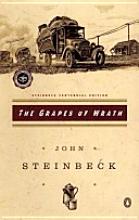Family Facts in Historical Context
Biff Barnes
People who want to create family history books often tell us that while the have done lots of factual research they have only a few family stories. What, they ask, can I do?
One of the ways to bring facts to life is to surround them with a historical context. If you don’t know many interesting details about your ancestor, try to find out what was going at the time and place where they lived.
You know that your family moved from Oklahoma to California in 1933, but the stories of their decision to leave Oklahoma and of their journey west have been lost. But there’s plenty of historical accounts of life in Dust Bowl Oklahoma and the migration of Okies to California. You could give your reader a sense of your ancestors experience by drawing upon stories told by people like them. You could make very effective use of literary passages like those in Steinbeck’s The Grapes of Wrath.

You could use political events associated with a time and place in the same way to suggest what life for your ancestors was like. Nancy Hendrickson, a Contributing Editor of Family Tree Magazine provides an excellent example of how it’s done. You have only an isolated fact to work with. In Hendrickson’s example, “My family was included in the Putnam County, Missouri, 1860 federal census.” Here’s how she puts that single fact into a rich historical context:
In the fall of 1860, an Assistant U.S. Marshal traveled the rolling green hills of Putnam County, Missouri, questioning the people in every household. He asked their names and ages, occupation and birth place. As an agent of the Secretary of the Interior, he was charged with the responsibility of taking the Eighth U.S. Federal Census. He was called the enumerator. As he traveled the county, he probably got an earful of local politics—after all, the presidential election was only weeks away and with the South’s threat to leave the Union should Lincoln be elected, secession talk had to be in the wind. That, and the institution that James Russell Lowell called “the relic of a bygone world”—slavery. In this census year, a separate enumeration called a Slave Schedule, was also taken. This would be the last time in the country’s history that slaves would be counted.
The context makes the fact read like a story and helps us to understand the world in which the people listed in that census lived. It’s a way to help your reader share the experiences of the ancestors who people your book.